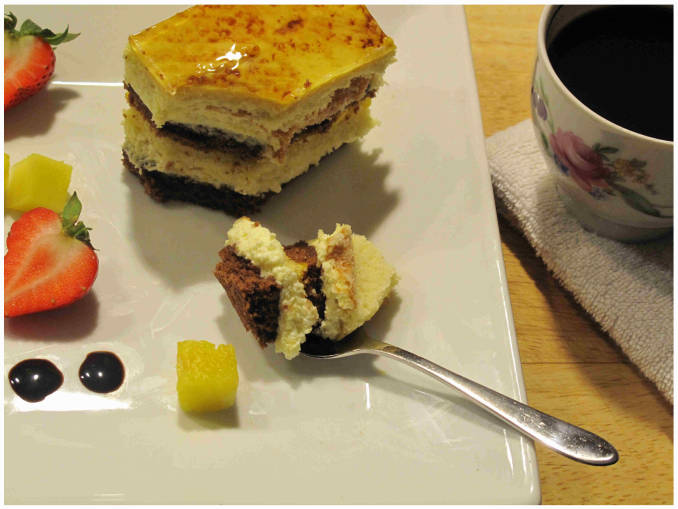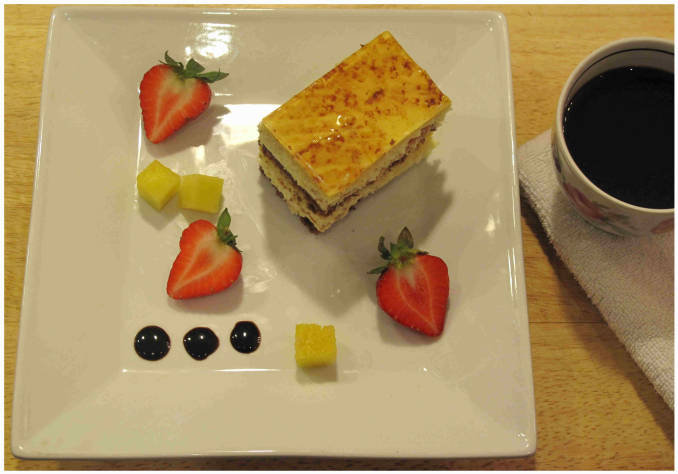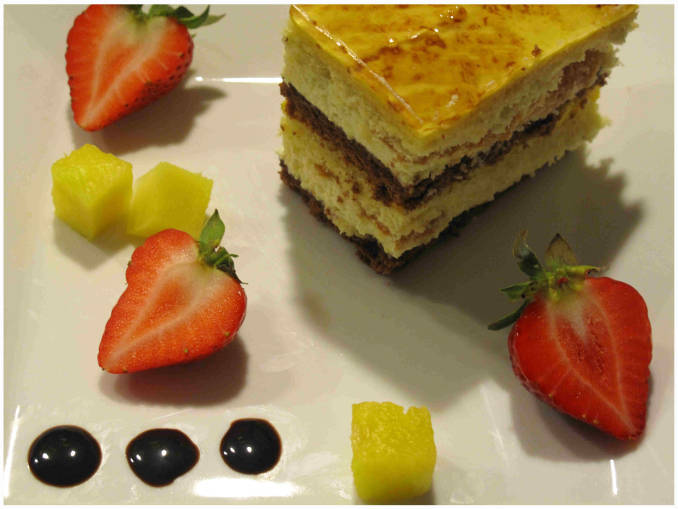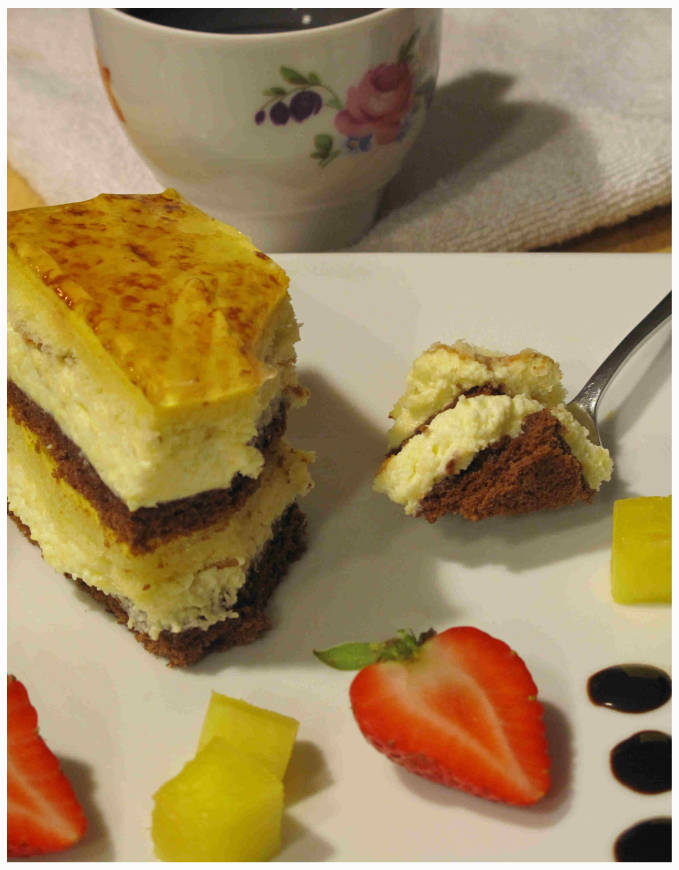Every spring my mother goes to the store and buys pretty much a crate full of mangoes from a tropical fruit store in Toronto. As soon as she gets home I run to the car, get the box, and feast on the juicy yellow flesh. So sweet, so good.

When I was in Panama two years ago I went to visit this fabulous tropical fruit market and saw piles of juicy, colourful fruits that I never saw before. There were guanabanas, prickly pears, and jackfruits! Sure, it was nice looking at them in the market (and it was quite fun buying them while sipping on sugar cane juice I saw squeezed before my eyes) but when I got back to the apartment I was perplexed on how to eat them. Eventually, I figured it out but I was hungry for more. I wandered to a convenience store and bought two coconuts (I wish Canadian convenience stores sold coconuts!), which both looked different.

One of the coconuts was white inside and surrounded by a brown-hairy shell, while the other was light green and had coconut juice (yum!) inside of it. I’ve had coconut before, and I’ve seen both separately, but for some reason I never realized there were two different types. Anyway, long story short, I grabbed a hammer and started smashing them on the balcony and eating what was inside.
In Canada though, during the winter, it’s a bit harder to get mangoes and coconuts. You can’t get them in convenience stores for sure. So, unwilling to let go of the warm summer weather, I made this tropical chocolate-mango-coconut cake with a layer of lemon glaze.

- 3 large eggs
- 3 large egg yolks
- 1 teaspoon (4g) vanilla extract
- pinch of salt
- ¾ cup (150g) of sugar
- ½ cup (70g) cake flour
- ¼ cup (30g) cornstarch
- 1 tablespoon (7g) powdered gelatin
- 3 tablespoons water
- 4 egg yolks
- ¼ cup (50g) sugar
- 1 cup (250ml) coconut milk
- 1 cup (250ml) heavy cream, cold
- 1.5 teaspoons (3.5g) powdered gelatin
- 1 tablespoon (15g) water
- 4 oz (120g) mango puree (to make your own, see here)
- 2 tablespoons (25g) sugar
- ½ cup (125ml) heavy cream, cold
- ½ cup (125ml)water
- ¼ cup (50gr) sugar
- 2 tablespoons (30g) rum
- For the lemon glaze:
- 1.5 teaspoons (3.5g) powdered gelatin
- 1 tablespoon (15g)water
- ¼ cup (62.5ml) water
- ¼ cup (62.5ml) lemon juice
- 2 tablespoons (25g) sugar
- Preheat the oven to 400F and set a rack in the middle. Lightly spray a 12x17 baking sheet with cooking spray or lightly brush with melted butter. Set aside Whisk the eggs, egg yolks, vanilla, salt and sugar together in a large bowl over a pan of simmering water. Whisk gently until the mixture is just lukewarm, about 100F on a candy thermometer(or test with your finger - it should be warm to the touch). Transfer the mixture to the bowl of a stand mixer fitter with the whisk attachment (or hand held beaters) and whip on medium-high speed until the egg mixture is cooled and tripled in volume. The mixture will be thick and will form a slowly dissolving ribbon falling back onto the bowl when the whisk is lifted. Over a medium bowl or a piece of parchment paper, sift together the flour and cornstarch. Add one-third of the flour mixture to the beaten egg mixture. Use a rubber spatula to fold in the flour mixture, making sure to scrape all the way to the bottom of the bowl to prevent the flour mixture from making lumps. Repeat with another third of the flour mixture and finally with the remainder. Pour the batter into the prepared pan and smooth the top with an offset spatula. Bake the genoise for about 10 to 12 minutes. Make sure the cake does not over bake and become too dry or it will not roll properly. Let cool on a rack. Remove the cake from the baking sheet and invert it on a larger piece of parchment paper. Peel of the parchment paper that was lining the baking sheet. Set the cake aside.
- Same process but replace the amount of cornstarch with the same amount in cocoa powder and proceed with the recipe the same way.
- In a small bowl, sprinkle the gelatin over the water and let stand to soften while you prepare the cream. In a large bowl, whisk the egg yolks with the sugar until very pale. In the meantime, in a medium large saucepan set over medium heat, bring the coconut milk to a simmer. Slowly pour the milk over the yolks, whisking constantly to prevent them from curdling. Pour the mixture back into the saucepan over medium low heat and cook until the cream coats the back of a spoon (as if making creme anglaise). Add the softened gelatin and stir until melted completely into the cream. Let cool to room temperature. In a stand mixer fitted with the whisk attachment, whip the cream to soft peaks on medium speed and fold it into the cooled cream base. Use within one hour.
- In a small bowl, sprinkle the gelatin over the water and let it soften while you prepare the fruit. In a medium saucepan, bring the mango puree and sugar to a simmer. Remove from the heat and add the softened gelatin. Stir until the gelatin is completely melted. Transfer the fruit puree to a large bowl and let it cool to room temperature. In a stand mixer fitted with the whisk attachment, whip the cream on medium speed until soft peaks form. Fold about ⅓ of the whipped cream into the fruit puree to lighten it up (do not worry about losing air at this point). Carefully fold in the rest of the whipped cream. Use within one hour.
- In a small saucepan set over medium high heat, bring all the ingredients to a simmer until the sugar dissolves, stirring occasionally. Let cool to room temperature.
- In a small bowl, sprinkle the gelatin over the water and let it soften. In small saucepan set over medium high heat, bring the water, lemon juice and sugar to a simmer, stirring off and on to make sure the sugar dissolves properly. Add the gelatin and stir until completely dissolved. Let cool to room temperature (if the mixture gels, warm up over low heat until barely melted again).
- Line an 8x8 baking pan with parchment paper of foil, leaving a border on the sides to make it easy to remove when set. Please note, it will be quite high (about 3-4 inches) You can also use a cake frame of the same dimensions. Cut two 8x8 cake layers in each of the genoises. Place one layer of the chocolate genoise at the bottom of your pan and brush with some rum syrup. Pour half the coconut Bavarian on top and smooth with an offset spatula. Top with a layer of vanilla genoise, brush some rum syrup on top. Pour half the mango mousse and smooth with an offset spatula. Repeat the process with the second half of cakes and creams. Refrigerate until set. Pour the lemon glaze over the cake and let set in the fridge. Cut through the cake with a knife dipped in hot water to prevent breaking the glaze instead of slicing through it. If you wish to add chocolate brush strokes, dissolve about a teaspoon of cocoa with a tablespoon of water and brush onto the set mango mousse with a pastry brush. Once dry, pour on the lemon glaze. You can also substitute the chocolate brush strokes with matcha brush strokes by using matcha instead of cocoa. For the best taste let the cake sit overnight in the fridge before eating it.
So tasty-looking oh gawd.
Great pictures, a good read overall
you’re very talented Ilan!! (:
There’s a coconut tree outside my window-I live in Antigua (aka “That’s a country?” Aka Paradise.
Actually, both coconuts are the same type-One’s just older. They start out green, filled with water, that gets sweeter as it gets older, eventually turning into hard ‘meat’. The brown hairy part is found when you let it age and take off the outer layer of skin Sometime in between the water and meat stages, you get coconut jelly which is soft, slimy, and delicious along with your coconut water.
Your blog is great-cool recipes and great fun reading!
looks amazing…is it time consuming.
A little bit, but it is delicious!
Too much work! Don’t get me wrong, but while I’m sure it’s delicious. Right now I am looking for a simple recipe, next time!
Gorgeous!!!!
Hello there! It’s not two types of coconut, but actually a fresh green one (used for eating and drinking) and a dried one (more used for making coconut milk from the flesh).
p.s. it’s also good practice and common courtesy for bloggers to attribute the source of their recipes.